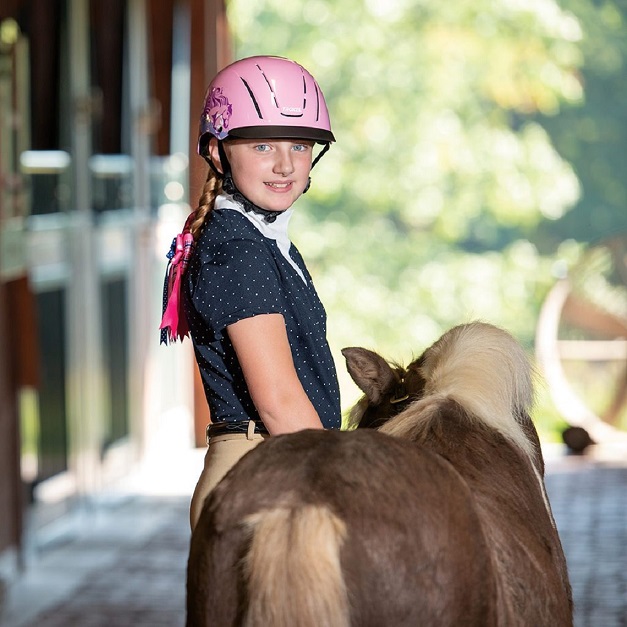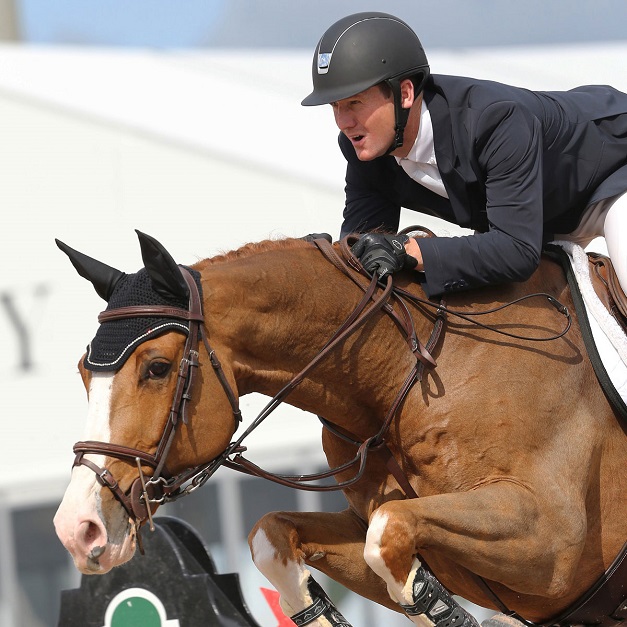The Importance of Riding Helmets in Equestrian Sports
No rider expects to have the kind of fall from their horse that will change their life forever. Though every ride has the potential for an accident, certain safety measures, like wearing a riding helmet, can help you focus more on enjoying the sport, rather than dwelling on the associated risks. Just like wearing a seatbelt when riding in a car, wearing a helmet when riding a horse is your defence against head injuries. Regardless of how skilled horse rider you may be, mistakes can happen in the blink of an eye and for a bunch of reasons.

Still, only a small percentage of equestrians wear protective headgear every time they ride. Excuses vary from concerns about messing up riders’ hair to being very experienced and therefore feeling no need for wearing a helmet. Considering that horse riding has been compared to motorcycle racing in terms of risk levels for injury, the next time you plan on riding a horse or just working near one, don’t forget to wear a riding helmet. Being prepared for the worse at all times is essential for a variety of reasons.
- Riding without a helmet increases your chances of suffering more severe injuries that could lead to permanent disability and/or expensive treatment and rehabilitation;
- Research has shown that about 10% of traumatic brain injuries in recreational sports are riding-related;
- Riding helmets have evolved significantly over the years and are more comfortable than ever. A correctly-fitted helmet won’t cause headaches or overheating. That is because modern helmets are lightweight and have features that allow them to perfectly mould to the rider’s head;
- Helmets are now available in so many models, colours and styles that they can suit various school and competition attires, completing a traditional look or allowing riders to showcase their individual style;
- Wearing a helmet can also serve as an example for other riders of all ages and skill levels to wear one, helping to keep them safer in the saddle.
Where to Buy Horse Riding Helmets?

The market is full of various models of helmets for horses and the competition among manufacturers to produce more streamlined, comfortable and attractive headwear is at an all-time high. This means that there are hundreds of specialized online stores where you can purchase these pieces of equipment. The question is, how do you find the best helmet for you?
There are specific hazards that come with horse riding, and if you want to participate in organized equestrian events, you must have an approved helmet. For enhanced protection, choose a model that exceeds the pre-set minimum standards. These include:
- Even distribution of shock through the helmet to reduce trauma to one area;
- Features that prevent sharp objects from penetrating the helmet;
- A strap design system that prevents the helmet from coming off during a fall and ensures a snug fit at all times.
Manufacturers must put their helmets through these tests to earn the certification. No matter how expensive the helmet is or what it looks like, if it is not certified, it won’t protect your head the way it is supposed to in case you fall.
How to Measure for a Horse Riding Helmet?
Fit is another important factor in selecting the right safety helmet. Some manufacturers even offer models in regular and long oval sizes. If the regular rounded size doesn’t fit you well, try the long oval size, which may fit better the shape of your head.
Some manufacturers use head circumference in centimetres, some use hat sizes and others use universal helmet sizing ranging from extra small to larger. You should also know that helmet sizes vary between manufacturers. So, before you set out on a shopping spree, make sure you measure your head.
- Place the tape measure snugly around your head at the widest point. The tape should go over the bump at the back of your head and just above your ears.
- Compare your head measurements to the manufacturer’s helmet sizing chart.
- Make sure to try on your helmet with your hair in the same style in which you ride. If you have long or thick hair, you may need to get a slightly bigger helmet.
- Check the overall fit. To be right, a helmet should fit snugly on your head and cover your entire skull, with equal pressure all around. There shouldn’t be any gaps between the helmet and your head. Equal pressure with the lining helps the helmet to absorb force in case of an accident.
How Often to Replace Riding Helmet?
Experts suggest replacing your helmet every 5 to 6 years. This is not only because it’s the average life span of this piece of gear but also because safety standards are updated at least that often. And as manufacturers are continually improving their designs, be prepared to go through the fitting process again, even if you plan to stick with your favourite model.



